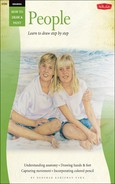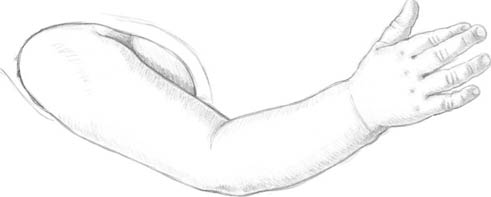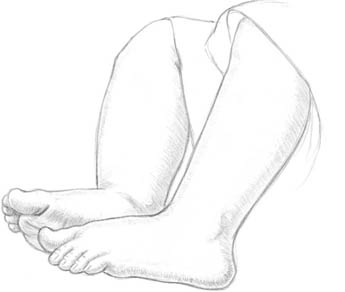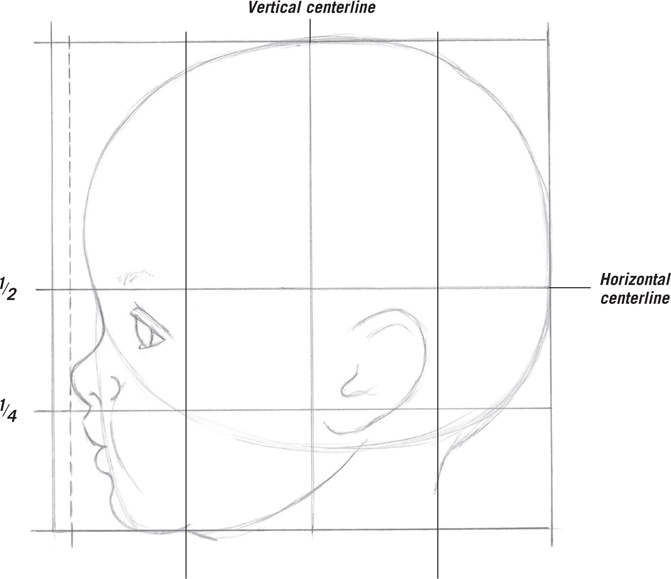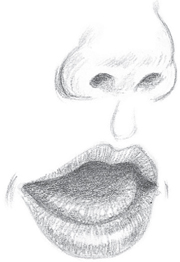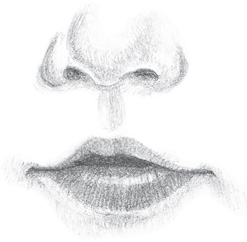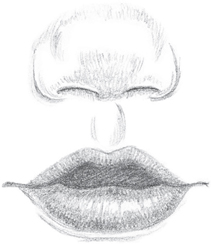Drawing children can be challenging because you have to get their proportions just right or your drawings will look odd. Children’s proportions are much different than adults’, and children’s proportions change as they age. For example, a baby’s head is extremely large in proportion to its body—but as the child grows up, the head becomes smaller in proportion to the body. Additionally, a child’s head is wider than it is long, so it’s rounder than that of an adult. If your drawings of children look too old, make sure you’re not using adult proportions!

Toddler
(3-3/4 heads tall)
PROPORTION SCALE FOR GROWTH YEARS Infants’ bodies are short, making their torsos and limbs appear proportionately thicker. As infants grow into toddlers, their faces and bodies begin to elongate.

Age five
(4-1/2 heads tall)
By age five, children are about half as tall as they will be as adults;

Age eight
(6 heads tall)
and by age eight, growth spurts will add another 1 to 2 heads in height, further elongating the body.

Young teen
(6-1/2 heads tall)
By the early teens, the face has elongated to such a degree that the eyes are almost at the centerline of the face (where they are located on adults’ faces); the change in proportion results in a less chubby look, thus we say bodies lose their “baby fat.”

Older teen
(7 heads tall)
People reach their full adult height between the ages of 18 and 20; musculature is still developing, but adult proportions have been achieved. Note: These proportions and observations are based on averages; carefully study your subjects to determine their individual proportions.
DRAWING A BABY IN PROFILE The profile of a baby usually is very rounded, with a bigger, more protruding forehead than an adults’. The shape of the head in profile fits into a square. Babies’ noses tend to be smaller and more rounded as well. Block in the large cranial mass with a circle; then sketch the features. The brow line is at the horizontal centerline, and the bottom of the nose is about one-fourth of the way up the face. Light eyebrows and wispy hair help indicate age; as they get older, babies’ hair grows in thicker.
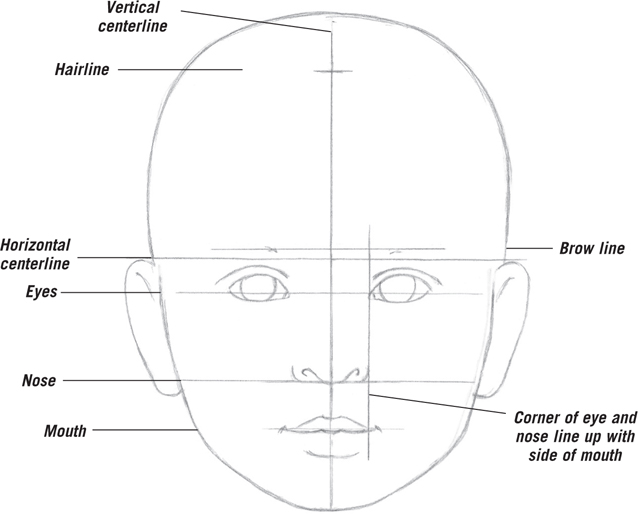
PLACING THE FEATURES Based on the placement of this subject’s features, you can estimate that the child is around five or six years old. The face has elongated enough to shift the brow line so that it lines up with the tops of the ears, showing that the child is no longer a baby. But the eyes are spaced farther apart, still indicating youth. The mouth is still relatively close to the chin, which also emphasizes a young age. (See the diagrams below for more on the shifting of the features with age.)

CHANGING PROFILES A baby’s facial features take up a very small part of the head; the eyebrows align with the horizontal centerline of the face. A baby has a very small nose and almost no chin, and the eyeballs are the same size as an adult’s, so you cannot see much of the whites of the eyes. As a child grows, the head and body elongate; the facial features move up the face as the teeth develop and the jaw grows. In the diagram above, notice where the eyebrow, eye, and ear fall in relation to the horizontal centerline at each age.
